Picture an exciting evening dining at a restaurant. You take your seat, browse through the menu, order a few drinks and enjoy your meal over lively conversation with friends.
Sounds great, right?
Now picture an evening out where food is just one element of the whole experience. Multi-sensory restaurants emphasize sights, sounds and smells in addition to the food you’re served, to create a unique and unforgettable dining experience.
For example, drinking wine with a group of friends is more than just that—the sounds of glasses clinking, the aroma of the wine in the air. All these elements make a seemingly simple event into a holistic experience and add to the taste of the wine itself. This is what many restaurateurs understand and have turned into multi-sensory experiences for their diners.
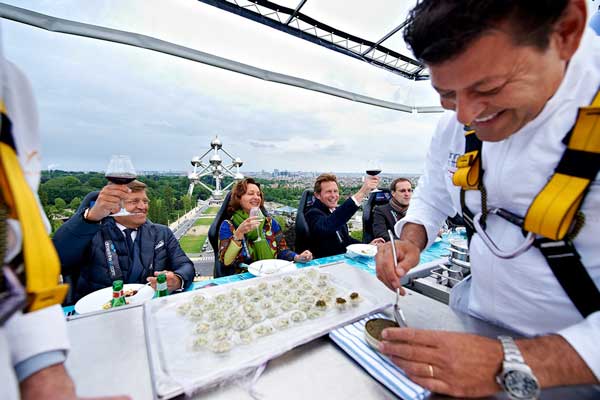
(Image source: Dinner In The Sky)
One such experience is the incredible “Dinner in the Sky”, which was born in May 2006 when Hakuna Matata, a culinary communications agency, and The Fun Group, an amusement park installations company, joined forces. The two entities created a “flying dinner table” where young European chefs could showcase their cooking while diners suspended in the air enjoyed their meals overlooking breathtaking views. The project was so successful that Dinner in the Sky has since arranged over 5,000 events in cities all over the world.
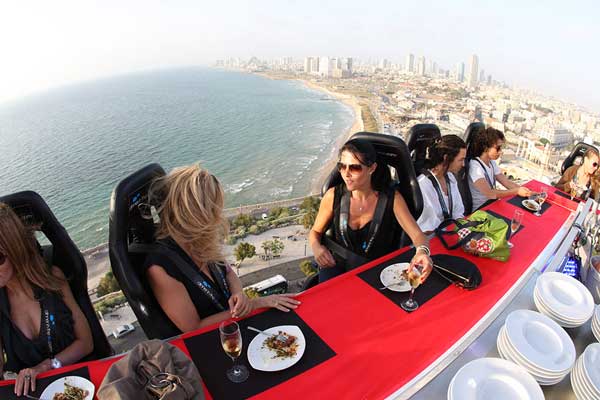
(Image source: Dinner In The Sky)
Other renowned restaurants such as Parlour in West London or Nocti Vagus in Berlin go to great lengths to differentiate themselves—from serving dishes with a three-foot-long sword to serving diners in pitch black darkness. However, what they all have in common is their desire to challenge the traditional concept of what a restaurant is. These eateries provide a “multi-sensory” or “experiential” experience, one in which every element is carefully thought out and selected based on how it will enhance the overall dining experience.
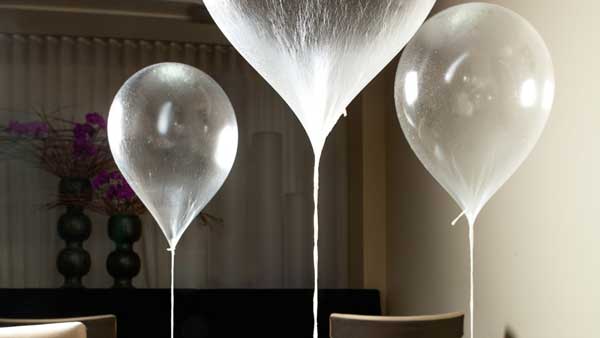
(Image source: Christian Seel)
What these restaurants know is that taste is “a construction of the mind more than the mouth”, as stated by Charles Spence, Professor of Experimental Psychology at the University of Oxford and author of Gastrophysics: The New Science of Eating. Spence explains that taste coming solely from our tongues or from the food and drinks we consume is an illusion. In reality, all of our senses are involved. “Everything from the colour of the plate to the weight of the cutlery in your hands, from the background music to any ambient scent, as well as the lighting and even the softness of the chair you are sitting on – it all has some effect on what we think about the food and drink we are tasting”, he exclaims.
Molecular Gastronomy
Many people confuse multi-sensory dining with molecular gastronomy. To set the record straight, molecular gastronomy is a subdiscipline of food science that refers to the scientific investigation of cooking. The term was coined in the late 1980s by Nicholas Kurti and Hervé This.
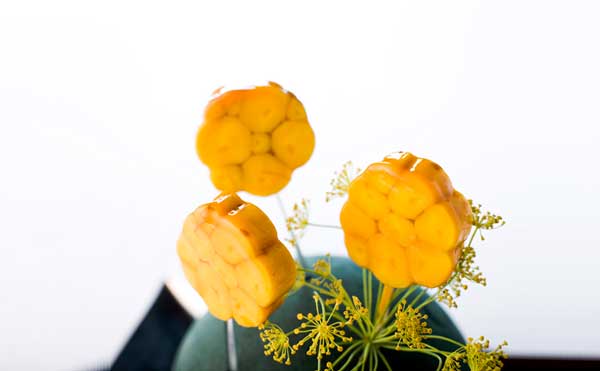
(Image source: www.luxury-insider.com)
However, in recent years the term also refers to a contemporary style of cuisine and is often used to describe the work of many chefs who prefer ‘molecular gastronomy’ over other terms such as multi-sensory cooking, experimental cuisine, or modernist cuisine.
Although no matter what you like to call it, this medium of dining is fascinating and powerful.

(Image Source: Alinea)
Talented chef, Grant Achatz, is one of the leading chefs in the molecular gastronomy genre and owner of the Chicago based restaurant, Alinea, which has won numerous accolades including three michelin stars. Achatz has produced some of the most talked about dishes that leave diners in awe of his culinary genius. These dishes include desserts plated to the tune of music on specifically designed artistic canvases, deconstructed peanut butter and jelly, and edible apple balloons filled with helium.
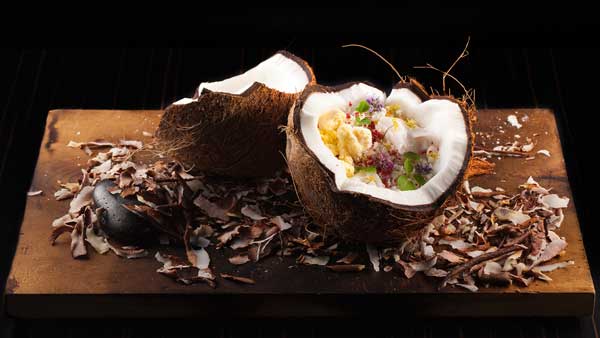
(Image Source: Alinea)
Steinbeisser Creative Studio
The Steinbeisser Creative Studio in Amsterdam is one hub which celebrates and promotes experimental gastronomy on a global level.
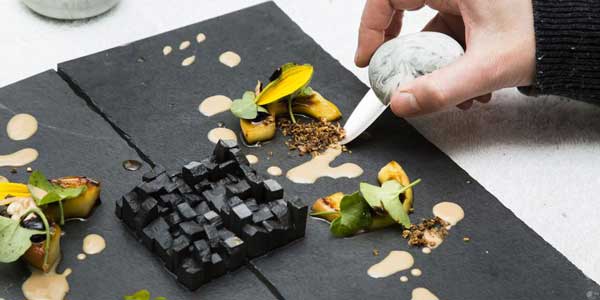 (Image source: Caroline Prange for Steinbeisser)
(Image source: Caroline Prange for Steinbeisser)
In 2012, they launched the Experimental Gastronomy initiative in which they bring together talented chefs and artists to create unique culinary experiences. All food and drink is entire plant-based and sourced from local organic producers. The artists then create cutlery and dishware that complement and enhance the dishes all in the spirit of finding new ways to enjoy food.
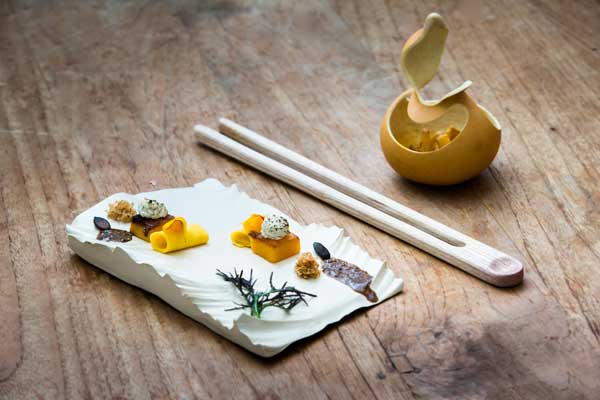
(Image source: Caroline Prange for Steinbeisser)
The latest edition of the culinary event will take place at the Lloyd Hotel in Amsterdam in June of 2018. There, Michelin star Chef Alexandre Gauthier will be featured alongside artists, ceramicists and renowned designers.
Project Gastronomia
Another interesting initiative in the world of multi-sensory dining is Project Gastronomia.
Developed at Kitchen Theory, a creative studio with a keen interest in the psychological elements of eating, dining and perception of flavors, Project Gastronomia seeks to create a collaborative initiative where food is a vehicle for change.
How so?
By expanding the definition of gastronomy to encompass a wider and more accurate reflection of its importance in society. And on a practical level, to accomplish sustainable food systems by 2050.
The first activity took place in February 2018 as a closed session one-day workshop where 10 expert multi-disciplinary professionals came together the develop a framework around multi-sensory dining ant its food impact on the food systems of 2050.
The workshop laid the foundations for the future public event—Multi-sensory Design in Gastronomy 2050—hosted by 10 experts, for 70 participants on the 19th of April, 2018.
Vespertine
To drive the point home at how unique and incredible multi-sensory dining experiences can be, we can’t leave out mention of Jordan Kahn’s “Vespertine” restaurant in Culver City, Los Angeles.

(Image source: Vespertine)
The new 22-seat tasting menu restaurant is self-described as a “place of shadows and whispers”, “a spirit between two worlds,” poised to disrupt the space-time continuum. And in plain english—for $250 per person, you will receive a “dinner experience in four acts” or 18 or more courses that will leave you feeling impressed, perplexed, frustrated—or all three.

(Image source: Vespertine)
Everything from the building to the bathroom in the restaurant hold special meaning to the dining experience. For example, the two-story structure created by Architect Eric Owen Moss, is a curvy glass building with red-steel grid laid over and sets the ambience for the dining experience upon arriving. While dining, you might leave to use the restroom, in which you will find no soap dispenser. Instead, you will find an untouched bowl of borax powder soap from the 1960s infused with the restaurant’s signature scent, alongside small vials that hold mouthwash—yes, mouthwash. And as soon as a guest leaves the restroom, a staff member replaces all containers with new ones.

(Image source: Jeff Elstone Courtesy of Vespertine)
A press release explains that Vespertine is dedicated to “exploring a dimension of cuisine that is neither rooted in tradition nor culture”. Guests enjoy dishes such as a sequined branch on an inclined black tortilla, excellent lobster served with a bittersweet sauce of malted barley syrup, and brined scallop paired with yuzu sauce and tea from Douglas fir tips.
